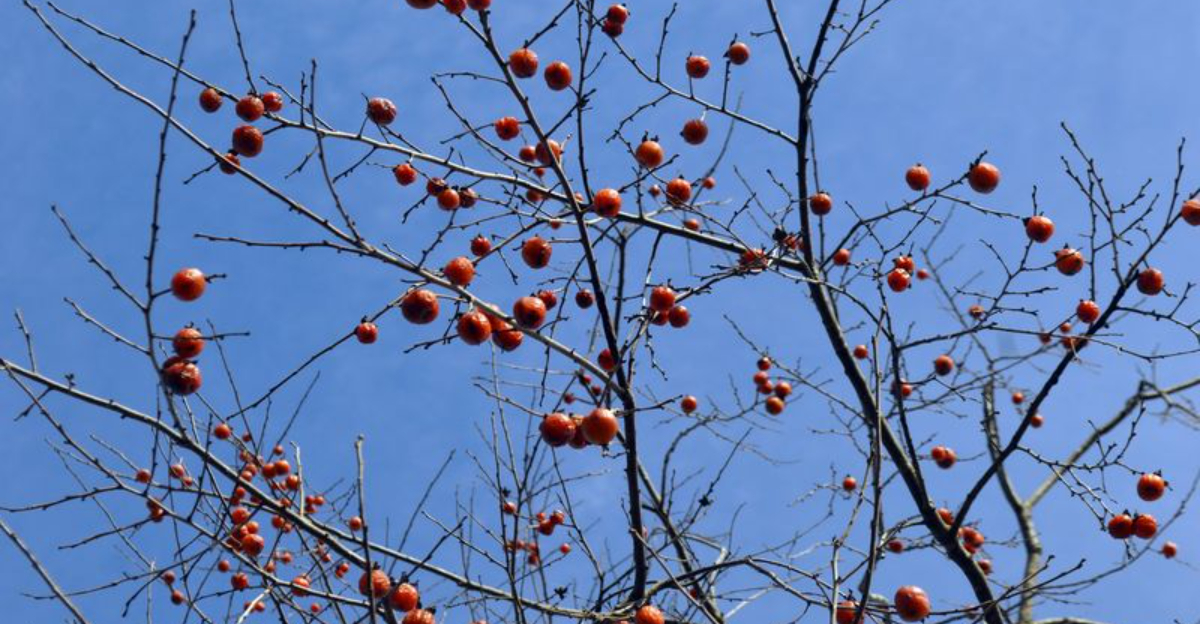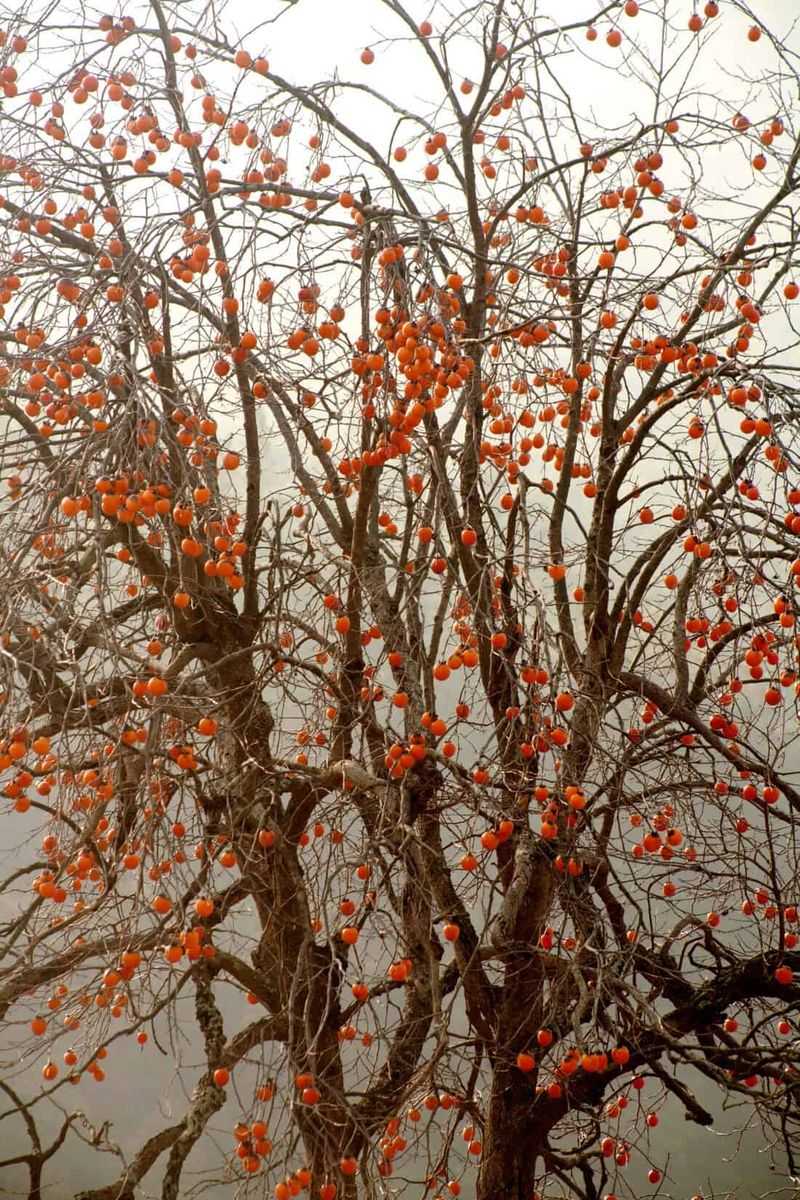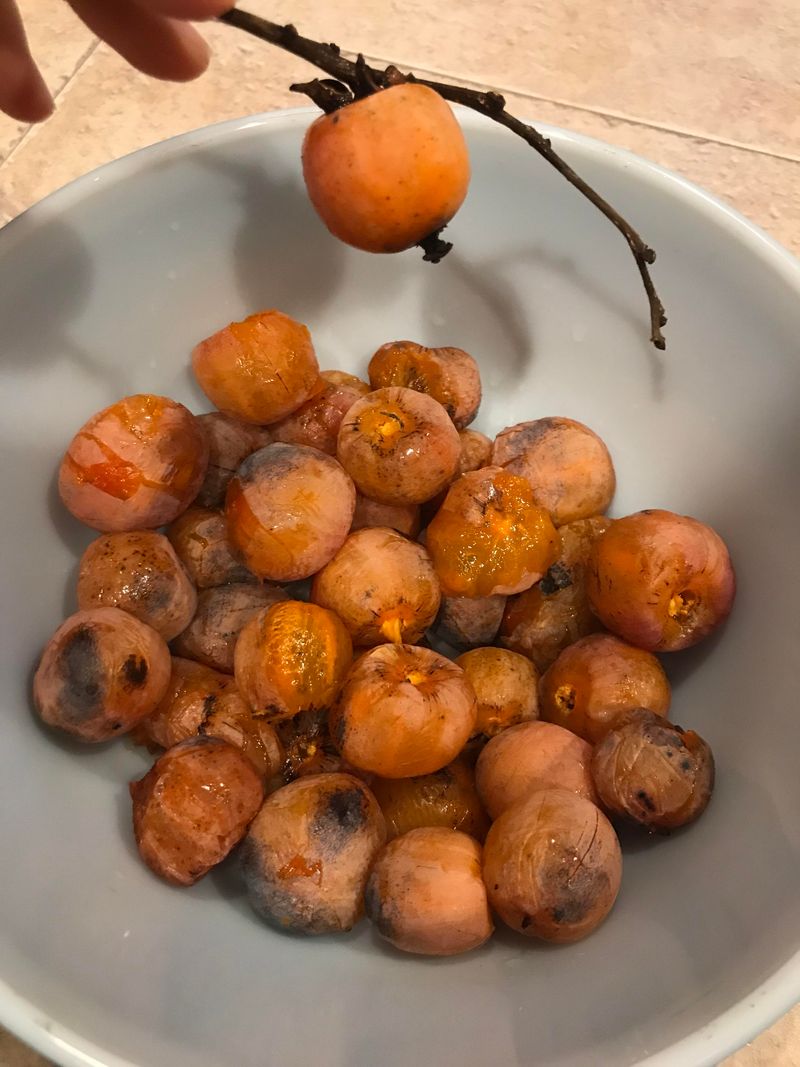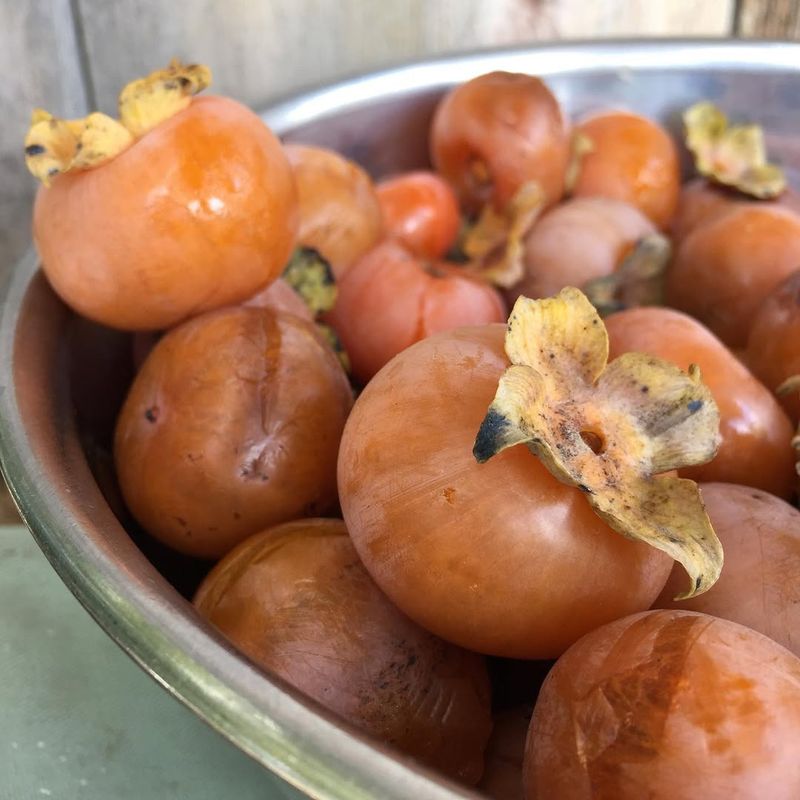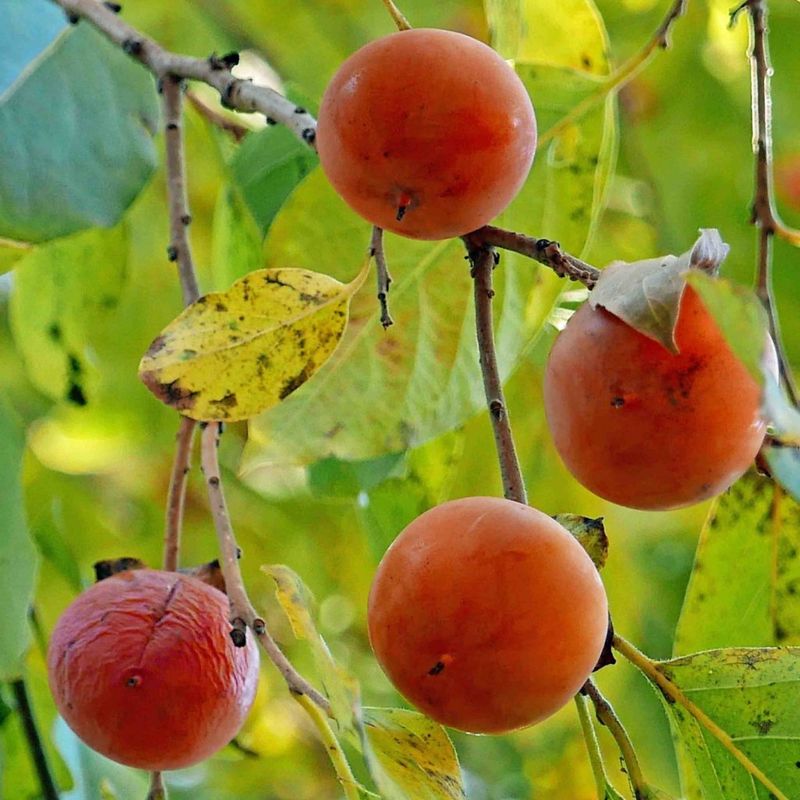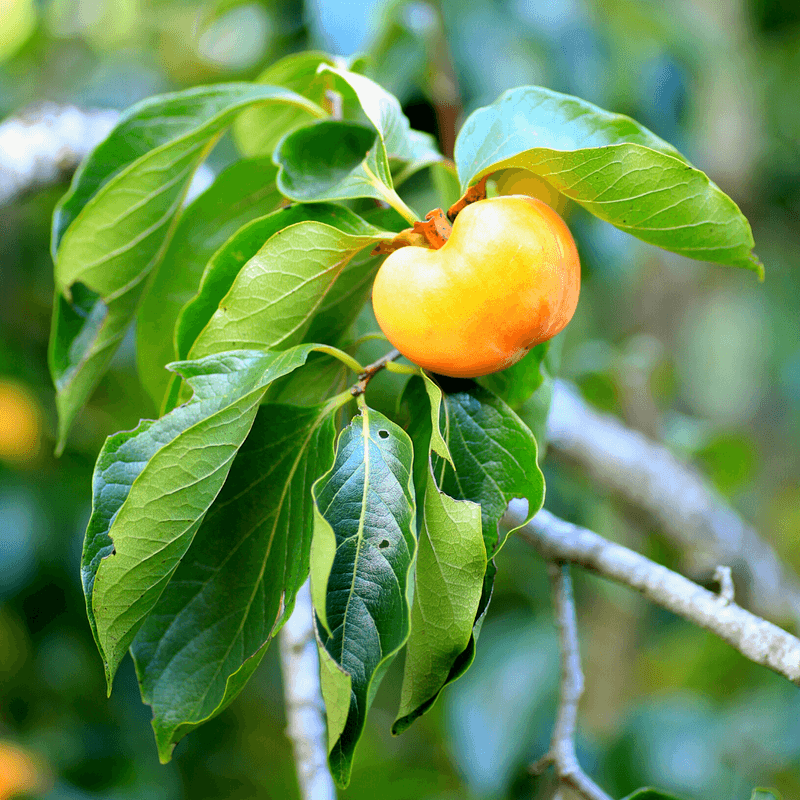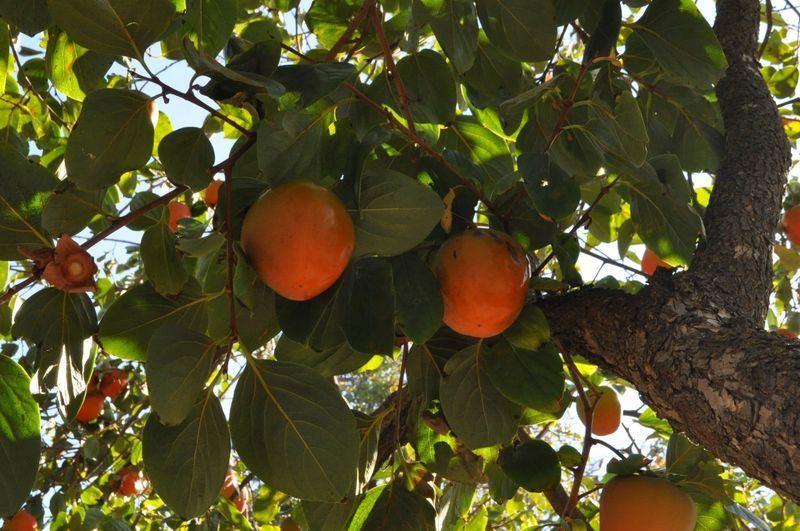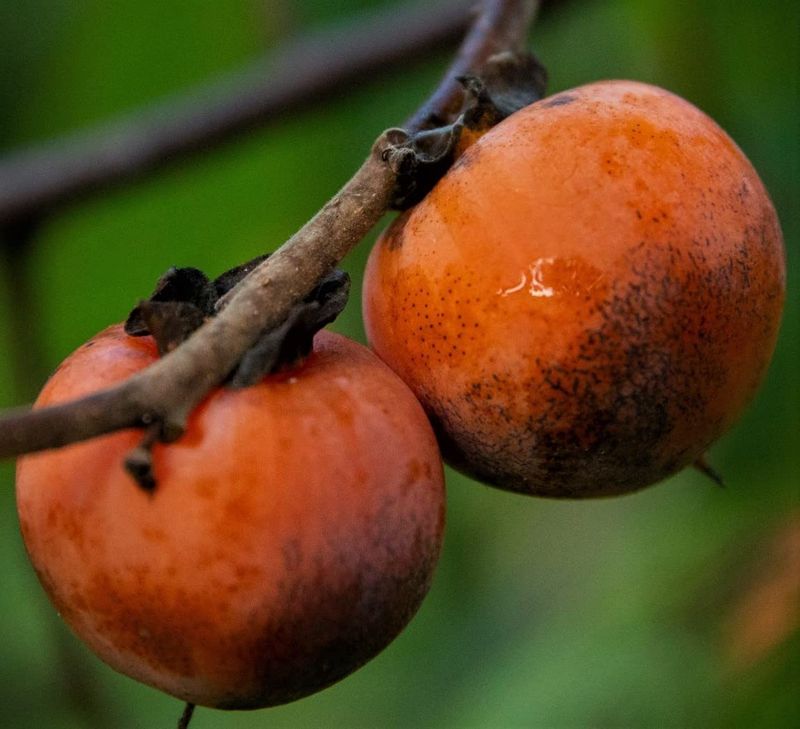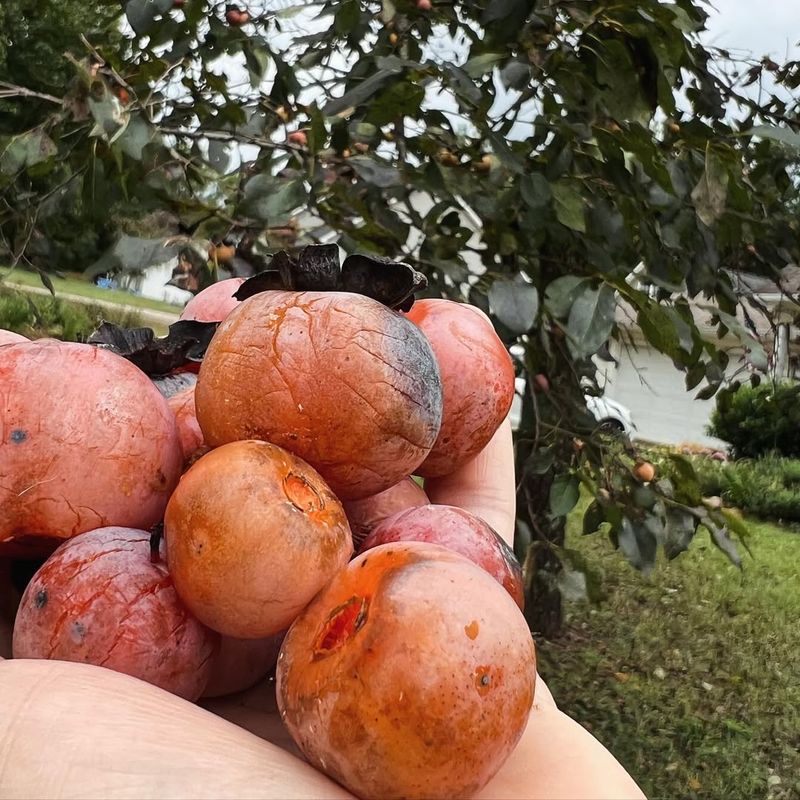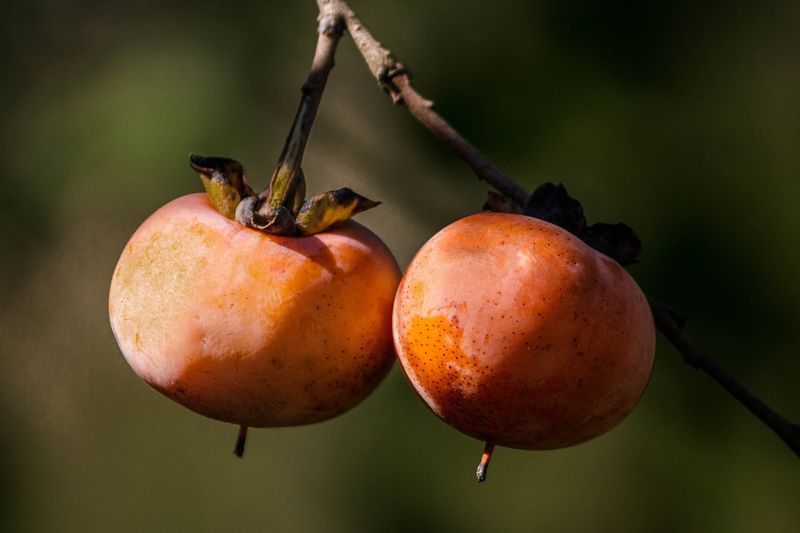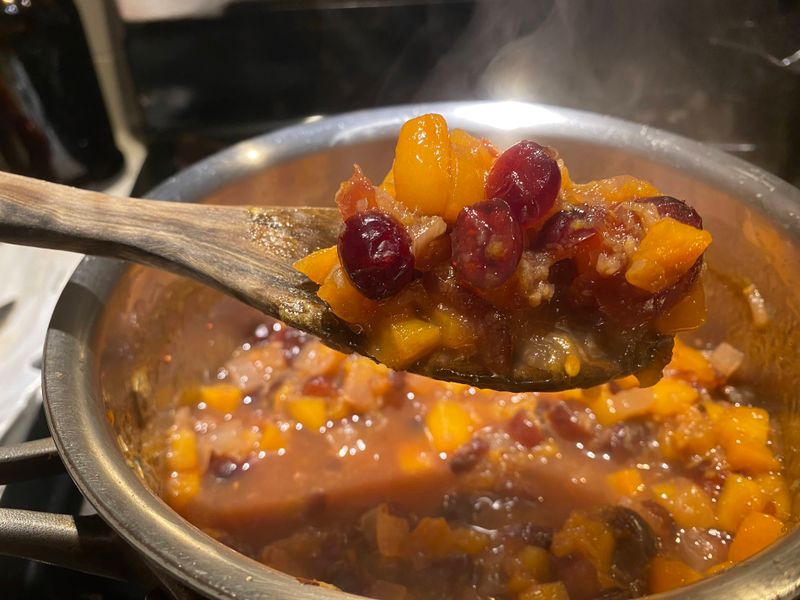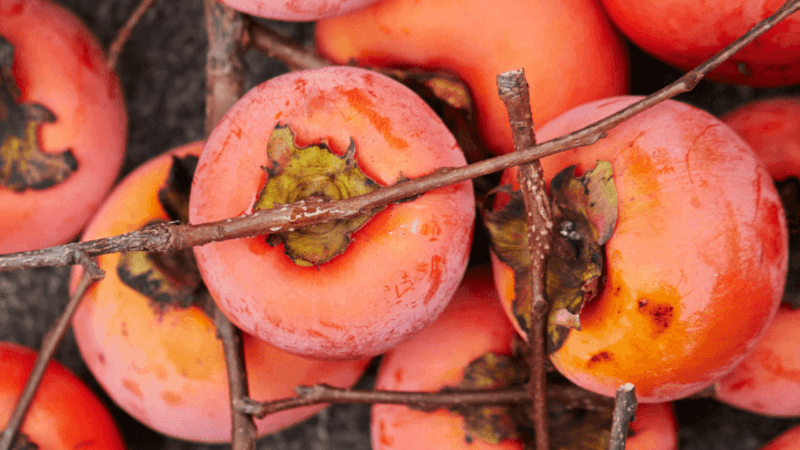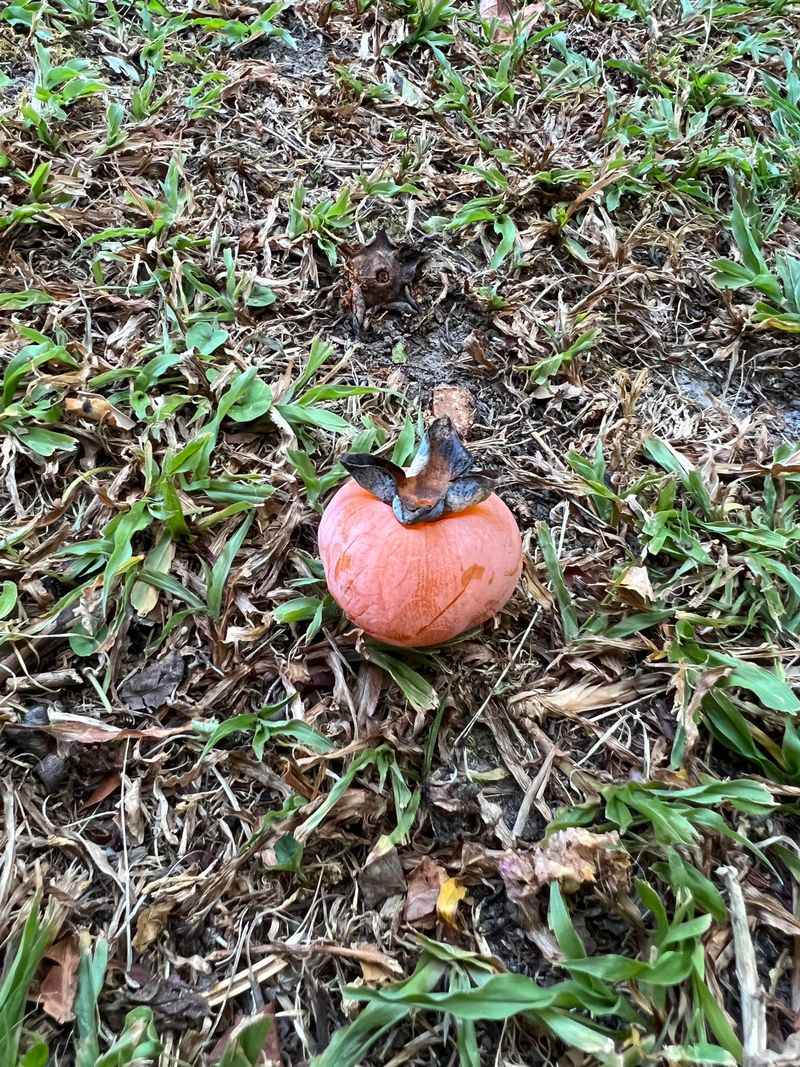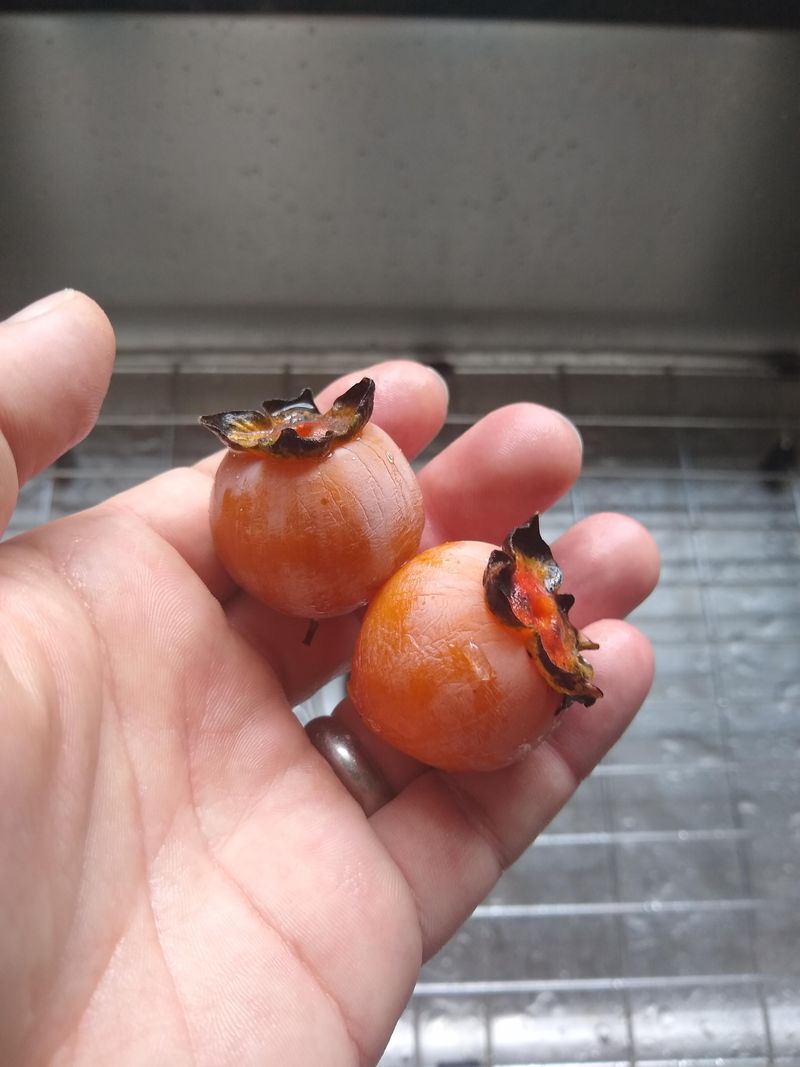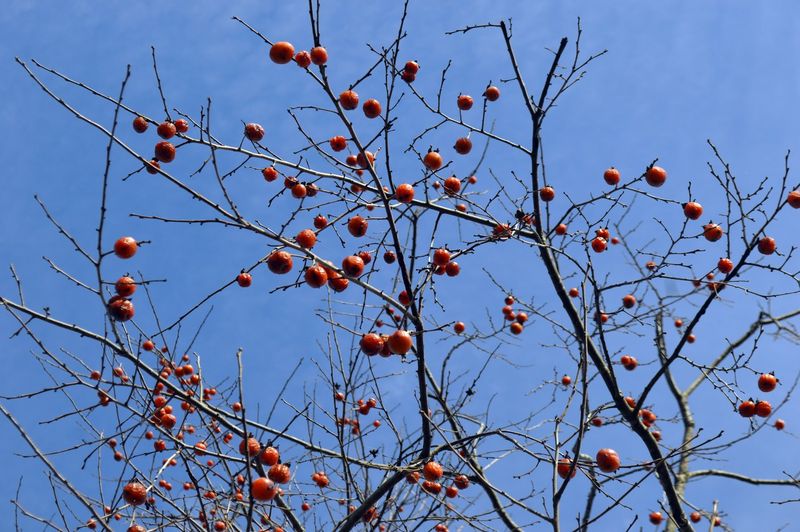Discover the fascinating world of American persimmons, a fruit native to the eastern and central United States.
Enjoy these fruits that thrive in fields, forests, and open areas, with a flavor profile that will sweeten your palate and enrich your culinary adventures.
This guide provides 14 essential tips to grow, harvest, and savor American persimmons, from understanding their growing conditions to culinary uses and fun facts.
1. Origin & Native Range
The American persimmon finds its roots in the eastern and central United States, thriving naturally in diverse landscapes. Often spotted growing wild in fields, forests, and open spaces, these resilient trees adapt to various environmental conditions.
Native to this region, persimmons have been cherished by both indigenous peoples and early settlers for centuries. They appreciated its sweetness and nutritional benefits. Today, this native fruit continues to be celebrated for its unique flavor and adaptability.
If you’re exploring wild landscapes in these regions, keep an eye out for these versatile and rewarding trees.
2. Appearance & Identification
Spotting an American persimmon tree is easy once you know what to look for. These trees can reach towering heights of 35–60 feet, proudly displaying a rounded crown and dark, scaly bark.
Their fruits are usually smaller than their Asian counterparts, about the size of a plum. As they ripen, the fruits transition in color from greenish-yellow to a vibrant orange, becoming a beacon of sweetness in the wild.
Next time you’re out in nature, challenge yourself to identify one of these magnificent trees by its distinct features and colorful fruits.
3. Flavor Profile
When fully ripe, the American persimmon offers a taste adventure not to be missed. The flavor is sweet, reminiscent of honey, with a slight earthy undertone that adds depth.
However, patience is key, as unripe persimmons hold a notable astringency that can surprise the uninitiated. Waiting for the fruit to be perfectly soft ensures a delightful experience for your taste buds.
If you’re keen on exploring new flavors, try a ripe American persimmon and enjoy its natural sweetness and unique taste that sets it apart from other fruits.
4. Popular Varieties
American persimmons come in several intriguing varieties, each with its own charm. Early Golden, Meader, Prok, and Yates are among those you might encounter. These cultivated varieties focus on traits like earlier ripening, larger fruit size, or reduced astringency.
Gardeners and fruit enthusiasts often select specific varieties to suit their taste preferences and local growing conditions. Exploring these varieties allows you to find the perfect persimmon for your needs, whether you’re after a sweeter taste or larger fruits.
Dive into the world of American persimmon varieties and discover your favorite.
5. Growing Conditions & Hardiness
American persimmons are renowned for their adaptability and resilience. They thrive in U.S. hardiness zones 4–9, enduring a wide range of temperatures with ease. These trees flourish best in well-draining soil with a slightly acidic to neutral pH, yet they are known to adapt to various soil types.
Providing them with ample sunlight will encourage optimal growth and fruit production. For those interested in cultivating these adaptable trees, understanding their growing conditions is essential.
Whether you’re an experienced gardener or a novice, American persimmons promise a rewarding addition to your landscape.
6. Pollination & Fruit Set
Pollination plays a crucial role in the successful fruiting of American persimmons. While some varieties are self-fertile, cross-pollination often results in more abundant crops. These trees usually bear either male or female flowers, though some can have both, making pollination a captivating process to observe.
For gardeners aiming to maximize their harvest, planting multiple trees can be beneficial. The interplay of pollinators like bees further enriches the garden ecosystem.
Embrace the beauty of nature’s processes and enhance your persimmon yield by considering their pollination needs in your planting strategy.
7. Planting & Spacing
Creating the right environment for American persimmons starts with proper planting and spacing. Position your trees in full sun to maximize fruit production, allowing them to soak up the rays.
Ensure each tree is spaced 20–30 feet apart to accommodate their mature size and promote healthy airflow. This setup not only supports robust growth but also helps prevent disease.
Planning your orchard with precise spacing and light considerations will lead to a thriving persimmon garden. So, grab your gardening tools and start designing your persimmon paradise for bountiful harvests.
8. Pruning & Maintenance
Maintaining American persimmon trees requires a light touch, as minimal pruning is typically needed. Focus on removing dead or diseased branches during late winter or early spring to encourage healthy growth.
Avoid heavy pruning, as it can reduce the tree’s fruiting potential. Regularly inspect your trees for any signs of pests or disease, and take action promptly to maintain their vitality.
With proper care, these trees can provide a long-lasting source of delicious fruit. Embrace the simplicity of persimmon tree maintenance and enjoy the fruits of your labor with minimal effort.
9. Harvesting & Ripeness
Timing is everything when it comes to harvesting American persimmons. The fruit typically ripens from late summer to early winter, depending on the region and variety.
To enjoy its full flavor, wait until the persimmon is soft to the touch and exhibits a deep orange hue. Picking them too early often results in astringency, which can be off-putting.
A gentle squeeze test will guide you to the perfect moment for harvest. With patience and attention, you’ll be rewarded with sweet, honey-like fruits that are worth the wait. Happy harvesting!
10. Culinary Uses
Ripe American persimmons are a culinary delight, ready to be transformed into various delicious creations. Use them in breads, puddings, jams, and pies to infuse a sweet, rich flavor into your dishes.
For a simple treat, enjoy them fresh by scooping out the soft flesh with a spoon, or freeze the pulp for later recipes. Their versatility makes them a cherished addition to any kitchen, inspiring creativity in both novice and seasoned cooks.
Experiment with different recipes and relish the unique taste that American persimmons bring to your culinary adventures.
11. Nutritional Benefits
American persimmons are not only delicious but also packed with essential nutrients. They are high in vitamins A and C, offering a boost to your immune system and skin health.
Their dietary fiber content promotes digestive health, while antioxidants help combat free radicals. Low in fat and cholesterol-free, these fruits make a nutritious addition to desserts or snacks, allowing you to indulge guilt-free.
Embrace the health benefits that come with each bite of this divine fruit, and enjoy them as part of a balanced diet. Your body will thank you for it!
12. Common Pests & Diseases
While generally hardy, American persimmons can face challenges from pests and diseases. Persimmon wilt, scale insects, and tent caterpillars are some common threats. Regular monitoring of your trees can help catch issues early, allowing for timely intervention.
Despite these challenges, persimmons are less prone to major diseases compared to other fruit trees, making them a resilient choice for gardeners. With vigilant care and preventive measures, you can ensure a healthy persimmon harvest year after year.
Embrace the joy of growing these robust trees and overcome any hurdles with confidence.
13. Storage & Preservation
Preserving the bounty of American persimmons extends their enjoyment beyond the harvest season. Fresh, ripe persimmons last a few days at room temperature and up to two weeks in the fridge.
For long-term storage, the pulp can be frozen or canned, ready to be used in baked goods throughout the year. This ensures you have access to their sweet flavor whenever the craving strikes.
Whether you’re making jams or adding them to desserts, effective preservation techniques keep the taste of summer alive. Enjoy the fruits of your labor all year round!
14. Fun Facts
The American persimmon holds a special place in history and culture. Its scientific name, Diospyros, translates to “divine fruit” or “fruit of the gods,” reflecting its esteemed status.
Early American settlers and Indigenous peoples cherished persimmons for their sweetness and medicinal properties. This fruit has been a vital part of cultural traditions and culinary practices for generations.
Sharing these fun facts not only deepens your appreciation for persimmons but also connects you to their rich heritage. Enjoy this divine fruit with a newfound understanding of its historical significance.
